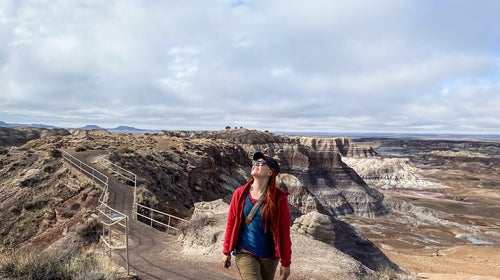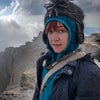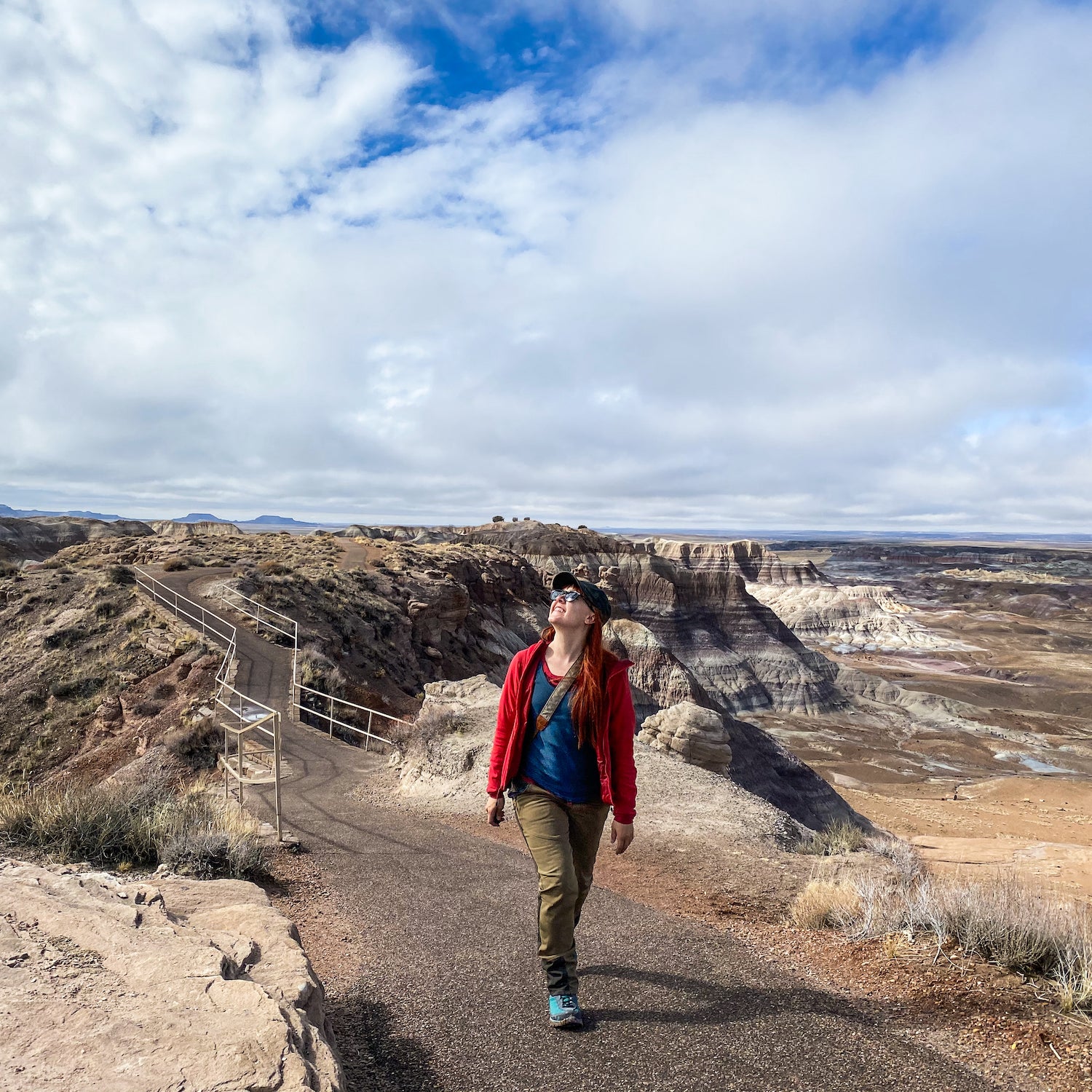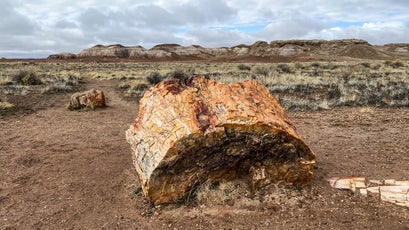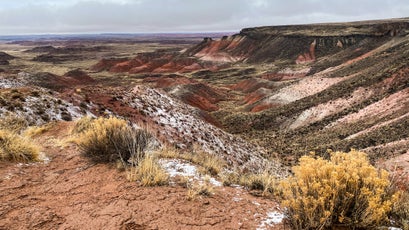62 Parks Traveler╠řstarted with a simple goal: to visit every U.S. national park in one year. Avid backpacker and public-lands nerd╠ř╠řsaved up, built out a tiny van to travel and live in, and hit the road. The parks as we know them are rapidly changing, and she╠řwanted to see them before itÔÇÖs too late.
Pennington is committed to following CDC guidelines during the COVID-19 pandemic to ensure the safety of herself and others. SheÔÇÖs currently on a travel break until the parks begin to reopen. In the meantime, weÔÇÖll continue to publish her previously completed parks to help you take your mind off the pandemic and plan for future adventures.
At Petrified Forest, in northeastern Arizona, when they say the park closes at 6 P.M., they mean it. After driving eight hours from the Guadalupe Mountains of West Texas and╠řthrough the deserted highways of rural New Mexico, I arrived at a locked gate a few minutes too late,╠řand my plans for a sunset hike went down in flames.
Instead, I had to watch picturesque, feathery clouds turn shades of electric pink from just outside the parkÔÇÖs boundaries. With snow forecast for╠řthe next morning,╠řI was going to have a very short window to see the park and make it count.
After a hearty breakfast at , a down-home Route 66 relic thatÔÇÖs been around since the 1940s, I set off for the parkÔÇÖs most famous area, the Rainbow Forest. Hillsides in every direction were spattered with fluffy, white snow,╠řlike a Jackson Pollack painting, a╠řstark contrast to╠řthe colorful badlands and deep jewel tones of the areaÔÇÖs petrified trees.
I elected to hike the three-quarter-mile╠řCrystal Forest Trail as the snow began to let up, sauntering along the paved loop and paying╠řrapt attention to╠řthe 200-million-year-old stone logs that lay around me. The place felt spooky and surreal. I tried to picture the landscape as it once was, with Triassic ferns and ginkgoes sprawling across a tropical, green river delta where phytosaurs roamed.
Petrified Forest can feel like a mind game for most visitors. It forces you to flip your preexisting notion of what a forest is on its head. Rather than straining your neck to take in tall trees, youÔÇÖre forced to meditate on broken trunks scattered around haphazardly. Once I understood that, the park really came into focus. I began to peer through the petrified trees and the layers of sedimentary rock, envisioning what the place once was:╠řa dense woodland teeming with life.
Due to a road closure, I took a long detour out of the park and returned╠řnear its╠řPainted Desert Visitor Center. The clouds were beginning to clear, and thin white wisps of vapor tumbled across the red hills.
A friend tipped me off that the one-mile Blue Mesa Trail was the hike to do in this national park, so I quickly drove across the barren highway to the parking area, marveling at the impossibly vibrant stripes of blue and white bisecting╠řthe hills╠řaround me.
The Blue Mesa area hosts badlands unlike any IÔÇÖve ever seen. Thick deposits of bluish bentonite clay paint the knolls here in muted shades of indigo and purple. As I strolled down the steep trail, I passed through millions of years of history, traversing a land rich with fossils.
Before it was time to go, I made one final stop, to the Painted Desert Inn. Now a museum and national historic site, the inn╠řserves as a relic of 1920s and 1930s adobe architecture along Route 66, complete with original murals painted by Hopi artist Fred Kabotie.
As I ambled across a portion of the Painted Desert Rim Trail, I gazed out at innumerable hills of crimson, umber, and rust. The sky was full of those perfect, fluffy white clouds ordinarily reserved for sitcom title sequences.
This wasnÔÇÖt what I planned, but it was pretty damn perfect,╠řI thought╠řto myself as I hiked back to my van.
Some parks donÔÇÖt need╠řa full day to leave a lasting impression.
62 Parks Traveler Petrified Forest Info
Size: 221,390 acres
Location: Northeastern Arizona
Created In: 1906 (national monument), 1962 (national park)
Best For: Scenic drives, hiking, geology, desert vistas, historic landmarks
When to Go: Spring (30 to 70 degrees) and fall (28 to 84 degrees) offer the best temperatures and the least rainfall. Summer (52 to 102 degrees) is typically rain-free, while in winter, lows can drop below zero.
Where to Stay: No vehicle camping is allowed inside the park, but the nearby town of Holbrook, Arizona, 20 miles west,╠řis full of campgrounds and lodging, ranging from nationwide chains to kitschy╠řRoute 66 motels.
Where to Eat: While thereÔÇÖs no shortage of old-fashioned American diners along Route 66, ╠řis the real deal. Go for the eggs, but donÔÇÖt miss the spicy green chile.
Mini ║┌┴¤│ď╣¤═°: Take a scenic drive through the badlands, and hike the accessible . This paved loop is a must-see attraction for any visitor, as it features a high concentration of the parkÔÇÖs namesake petrified wood.
Mega ║┌┴¤│ď╣¤═°: Backpack in the Painted Desert. Though I didnÔÇÖt have time for an overnight trek, the park offers ╠řfor adventurous souls whoÔÇÖd like╠řto sleep under the stars. Grab one at the visitor center, and a ranger will be happy to offer╠řroute suggestions.
